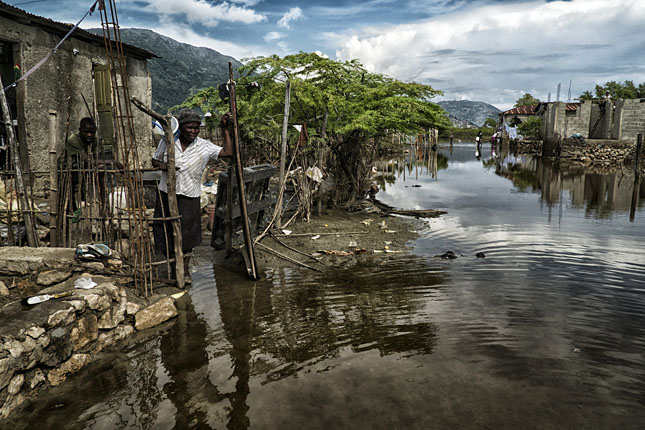-
New Research Links Water Security and Economic Growth
August 6, 2015 By Laura E. Turley
While it is intuitively clear that economic growth is related to water security – understood here as both water availability and also exposure to water-related risks such as drought and floods – there has been very little empirical evidence of this relationship to date.
A new report prepared by a task force under the Global Water Partnership and the Organization for Economic Cooperation and Development begins to address this problem by plotting global datasets of national economic growth against indicators of water security. The results confirm the intuition that the two factors are closely linked.
Based on the analysis by Claudia Sadoff et al., one can determine which countries would benefit most from fewer droughts in terms of the impact on their economic growth rate. In Malawi, for example, a 50 percent reduction in the so-called “drought effect” led to a 20 percent higher per capita GDP at the end of the simulation. In the case of Brazil, the reduced drought effect led to GDP per capita that was seven percent higher.
Climate Change: More Than Hotter Temperatures
A unique aspect of the research undertaken in Securing Water, Sustaining Growth is the implication for climate change research: water and water-related hazards have a statistically significant effect on economic growth, one that historically has been at least as important as, and likely more important than, temperature effects.
In estimating the economic impacts of climate change, many studies focus on how changes in temperature, and sometimes precipitation, will affect economic activity. What is new here is that runoff is included as an indicator, as well as specific flood and drought indicators, to measure water security, not just precipitation and temperature.
Runoff refers to water accumulating on the land surface as a result of hydrologic processes. As an indicator, it provides a more accurate depiction of water availability than precipitation because it includes soil moisture and temperature (factors of evapotranspiration). As for measuring water-related hazards, this study used cutting-edge flood and drought metrics. The results show that changes in both runoff (general water availability) and floods and droughts (water hazards) have statistically significant effects on economic growth.
This implies that studies focusing only on the temperature and rain effects of climate change will likely significantly underestimate the potential economic costs of climate change.
Avoiding the Hydro-Poverty Trap
Water availability and water-related hazards are obviously not the only factors affecting economic growth, but they do act as a significant drag or headwind on growth.
Most developed countries have already invested heavily in water information, institutions, and infrastructure systems. These investments may initially come at the expense of investment in other sectors, creating a drag on the economy. But without it, long-term growth is hard to sustain.
Today, countries that have made these investments are relatively water secure and facing largely tolerable water-related risks in the future. Most of the world’s developing nations, however, are relatively water insecure.
The goal is to get beyond a minimum level of investment after which a tipping point is reachedSecuring Water, Sustaining Growth builds on a 2007 article, “Sink or Swim: Water Security for Growth and Development,” by some of the same authors. They suggest that countries facing difficult water dynamics – those characterized by high rainfall and runoff variability – are often the world’s poorest countries. Typically in these countries, the level of institutional and infrastructural investment needed is very high and the ability to invest is low. Unable to break free of a low-lying equilibrium, many of these countries remain “hostage” to their hydrology, essentially analogous to a water-related poverty trap.
Investment in water infrastructure and institutions in these countries is therefore crucial for development, and the empirical case for this investment is only building.
Not all investment is equal though. The authors of Securing Water, Sustaining Growth stress that “investments in physical infrastructure will need to be accompanied by sound water institutions, integrated into wider governance frameworks and improved information systems.” In other words, return on investment depends heavily on effective management. Capital is not the only limiting factor.
Furthermore, water investments must carefully balance trade-offs among economic, environmental, and social criteria.
The goal for all countries, according to these researchers, is to get beyond a minimum level of investment into water infrastructure and water institutions, after which a sort of tipping point is reached and additional investments makes increasingly positive contributions to economic growth.
As climate change continues apace and the international community re-thinks the global development and climate change agendas, it is as important as ever to take into account how these important water management decisions affect us all.
Laura E. Turley is an independent consultant on sustainable development based in Geneva, Switzerland.
Sources: Global Dialogue for Water Security and Economic Growth, Water Policy.
Photo Credit: Flooding in Cap Haïtien, Haiti, courtesy of Logan Abassi/UN Photo.
 A Publication of the Stimson Center.
A Publication of the Stimson Center.



